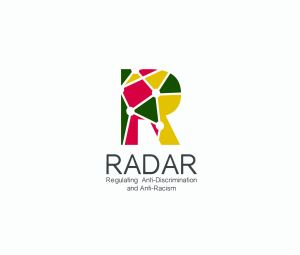Dr Katerina Strani led a working group on ‘Cross-cultural understandings of Race’ during the 14th ETMU Days conference themed Race, Power and Mobilities, which took place at the University of Jyväskylä, Finland on 26-27 October.
The working group was put together to examine cross-cultural understandings of race in the context of increased mobility and migration.
Minna Seikkula presented a paper on ‘The nexus between Anti-Racist Activists’ Conceptions of race/racism and migration’. Minna’s paper explored (dis)connections between racism and race/coloniality through an analysis of antiracist activists’ conceptions of racialized relations and practices in connection to migration. In Finland, as a part of the Nordic countries, speaking of racism often contains many paradoxes that are intensified by the current polarized political debate. For instance, Nordic self-perception is built on ideas of equality and democracy, while the eugenic pasts and their traces in the present are actively excluded from the grand narratives of the nation states. Race and racism are repeatedly seen relevant mainly or only in relation to migration, which can been seen to re-inforce the (false) image of white, homogeneous nation-states – yet, welfare state practices governing migration are often seen as neutral (or even anti-racist).
Minna’s paper compared the views of activists reacting to heightened presence of the extreme right, as well as those demonstrating solidarity to newly arrived migrants and those articulating Black, Brown and Muslim identities. In the analysis, the focus was on the question of how racialized oppression is connected to or disconnected from the continuum of coloniality, which reproduces a world divided between west and the rest through racialized borders. The analysis is based on interview data with 47 antiracist activists in Finland.
Next, Marta Padovan-Özdemir presented a paper written with Trine Øland on ‘Refugee Arrivals, Helping Hands and Hearts and Racialised Welfare Dynamics in Denmark, 1978-2016’. Marta and Trine’s abstract was as follows: “In the Summer of 2015, in all European welfare nation-states professionals, policy makers, administrators, and civil society organisations were in highest alert over the major refugee arrivals from Afghanistan, Syria, and the African continent. In Denmark, in particular, the government responded with stricter border controls and containment of refugees in temporary tent camps. Local administrative bodies and ngo’s contributed with panics about the managing of the new refugee groups. This state-of-alert is particularly interesting in a historical perspective of earlier Danish responses to the arrival of new refugee groups: The Afghans in the 2000s, the Bosnians in the 1990s, the Iranians in the early 1980s, the Vietnamese in the 1970s, the Jewish Poles in the late 1960s, the Hungarians in the 1950s, and not least, the Germans in 1945-46. The above-identified state-of-alert points to professional and civil confusion, disruption, and anxiety about not being able to manage a presumably new target group with the cultural repertoires already available. This state-of-alert crystallises welfare problematisations of the new target groups and becomes an occasion for the mobilisation of joint forces to manage and solve the imagined problems, thereby generating new tasks and needs for the helping hands and hearts.
This paper’s objective is to gain insight into continuities and breaks in re-presentations of the refugee, and on that background understand the welfare dynamic, which is mobilized in response to the arrival of new refugee groups.
The analysis builds upon critical studies of Danish welfare state developments and draws historical and analytical inspiration from Donzelot’s genealogies of the double pathologization inherent in welfare work. This is combined with Fanon’s underscoring of the racial order’s subtle expressions in postcolonial societies, which is supported by Said’s argument that re-presentation of the Other is the result of a willed human work.
Methodologically, the paper is designed as a historical-sociological documentary study of annual reports, newsletters, and consultations from Danish Refugee Council, Danish Red Cross and Association of Municipalities from the periods 1978-1980 (Vietnamese), 1992-1996 (Bosnians), and 2014-2016 (Syrian). The paper identifies two dominant re-presentations of the refugee as object of civil and public welfare work: the productive and the sick. Thus, the paper alludes to the racialisation of the welfare dynamic mobilized in response to refugees. A racialized welfare dynamic that is governed by an economic and pathological concern for the degeneration of society as well as of the individual.”
Finally, Katerina Strani presented her paper on ‘Exploring Cross-cultural Understandings on Race’. The concept of race, albeit controversial and disputed, is becoming more and more thematised in today’s multicultural societies, which are increasingly re-shaped by migration and changing demographics. These changes are bringing to the fore discussions on culture, belonging and otherness, with race being a central aspect of the latter. Starting from the premise that race is a social construct, Katerina’s paper looked at differences in the meaning, significance and difference in the construction of race and racialisation in different countries and cultures. The focus was on processes of exclusion and othering through racialisation and the hegemony of whiteness (cf Ahmed, 2007). It challenged the concepts of race and racism in the framework of migration nand mobility and urged the necessity to revisit these key concepts and seek definitions, clarifications and boundaries from people of colour themselves. The paper sought to establish a language to talk about race in a cross-cultural, changing and dynamic context without resorting to stereotypes, colourblindness or homogenisation of experiences.
The presentations were followed by a lively discussion on definitions, boundaries and ‘white saviour’ complex, which included two of the three keynote speakers of the conference, Nando Sigona and Tobias Hübinette. Working group participants are grateful for all comments and interest in our research!
The full conference programme and book of abstracts are available here: http://etmudays.etmu.fi/en/programme/

